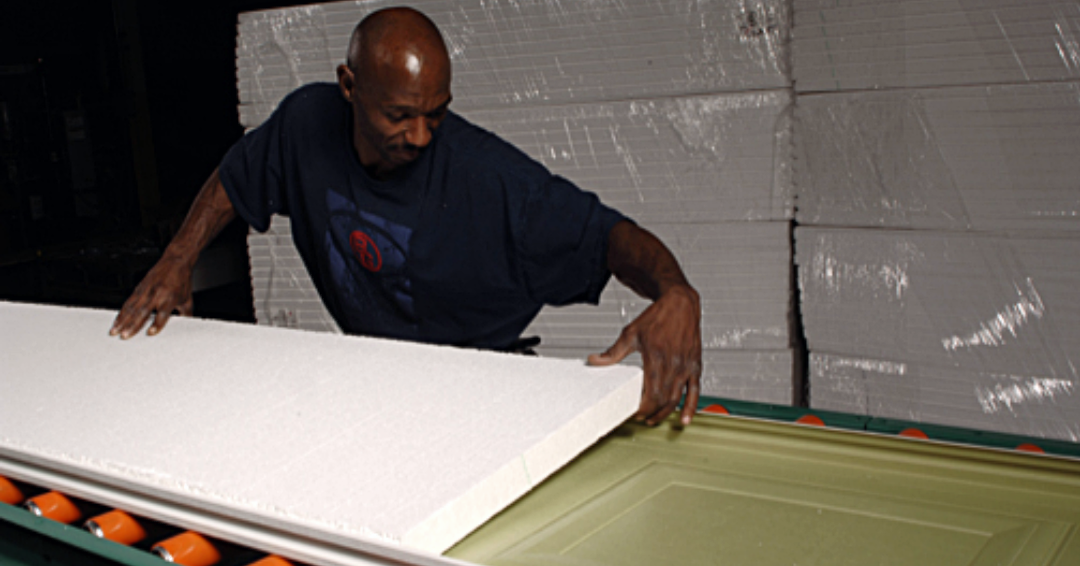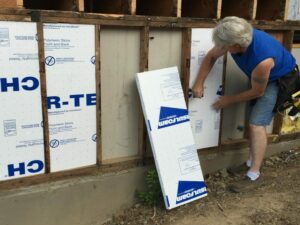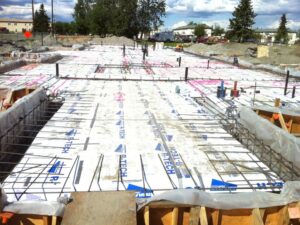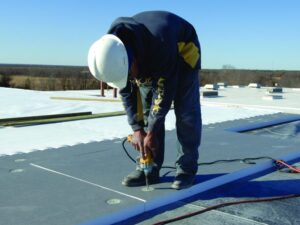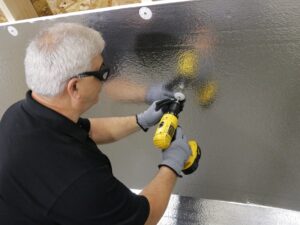The largest uninsulated space in most homes is the garage door. During hot summer months and cold winters, an uninsulated garage can become functionally unusable as extreme temperatures easily permeate its metal barrier. This heat transfer can also significantly impact energy costs, leaving you with an unused space that’s also costing you money.
Thankfully, insulating your garage door is an inexpensive and simple DIY project. In just a few hours, you can drastically improve your garage door’s insulative properties—especially if you choose to tackle this project with EPS garage door insulation panels available at many big box hardware stores (click here to find a retailer near you).
Read on to explore two immediate benefits an insulated garage door will provide, plus a simple overview on how to insulate a garage door.
An Insulated Garage Door Slows Heat Transfer
EPS foam is a high-caliber insulation material that, when installed as garage door insulation, supports more comfortable temperatures in your garage. Boasting the highest R-value per dollar of any rigid insulation, EPS foam can significantly slow heat transfer across your garage door.
With EPS foam insulation installed, your garage will be impacted less by temperature fluctuations outside. Experts at The Spruce estimate that insulating a garage door can affect the temperature in a garage by 20 degrees. Having more comfortable temperatures in your garage increases the space’s functionality year-round while also helping deliver tangible energy and cost savings.
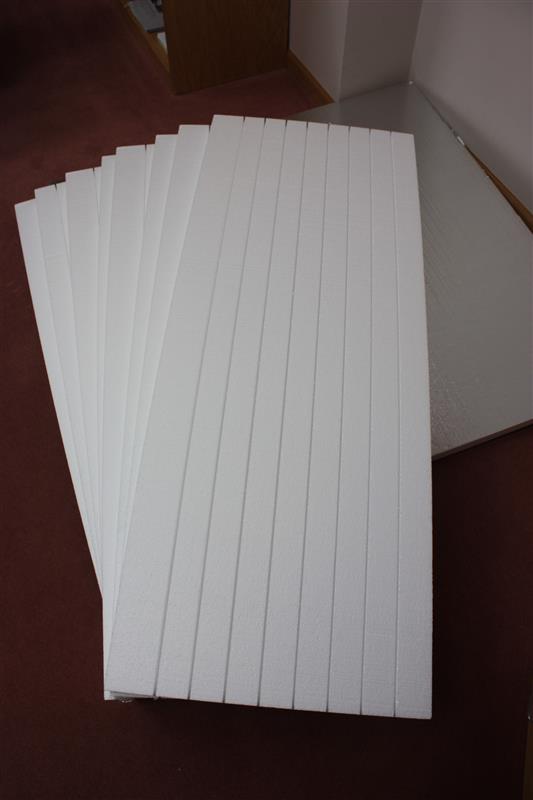 Garage Door Insulation Reduces Noise
Garage Door Insulation Reduces Noise
Garages are often one of the home’s noisiest areas, mainly because their uninsulated garage doors let sound waves easily enter and escape through its thin walls. Not only can this be an unwelcome distraction, but it can also sap the joy out of a home workshop.
Insulating your garage door with EPS foam will immediately improve its sound dampening performance—providing you with a quieter, more private workspace and the peace of mind of knowing your DIY projects won’t disturb the neighbors.
How to insulate a garage door with EPS foam
The benefits of insulating your garage door with rigid insulation are many, and the process of installing garage door insulation panels is quick and simple. All you need are a few basic tools and a few hours to complete this DIY project.
Tools needed:
- Tape measure
- Straight edge
- Utility knife
Process:
- Measure the width of the garage door from vertical rail to center.
- Measure the EPS foam board and mark according to the measurements from step 1.
- Cut along markings from step 2.
- Press the newly cut foam board into the garage door panel.
For more detailed installation instructions, there are many written and video resources available. And don’t worry—even if you’re an inexperienced DIYer, garage door insulation kits are easy to install and dependably provide a clean, professional look.
Do other areas in your home need added insulation?
Your garage door is just one of the places that can benefit from being insulated. Attics and access doors are often uninsulated areas that readily let heat enter and escape—contributing to unstable temperatures inside the home and unnecessarily high energy costs.
To immediately improve the comfort and energy efficiency of your home, take a look at our collection of DIY home insulation kits.

